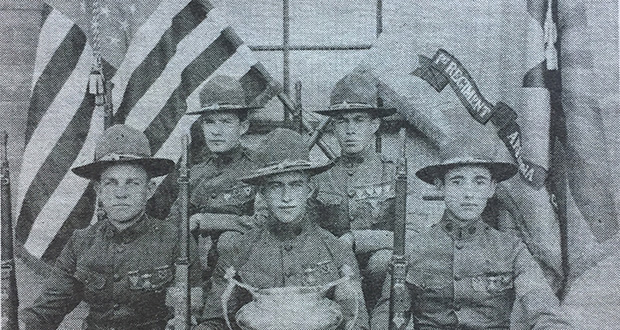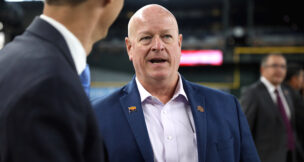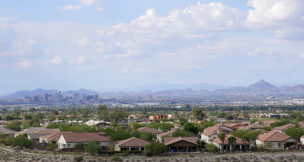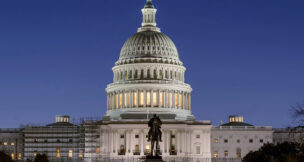McKinley and Congress
Arizona Capitol Reports Staff//August 11, 2006//[read_meter]
At first glance, the portly gentleman with hands clasped behind his back might be taken for an aging schoolmaster scolding errant children at recess. But he was not an educator and the youngsters pictured here were on their best behavior. They were, after all, hobnobbing with a man named William McKinley who was president of the United States.
In the spring of 1901, President McKinley embarked on a Western tour. On May 7, he stopped at Congress, Ariz., a booming mining camp located 19 miles north of Wickenburg. Assassinated just four months later, President McKinley’s impression of Congress, and of the Arizona Territory, went unrecorded. We do know, however, that Congress rolled out a red carpet and plotted a festive day for the president. Perhaps it provided a moment’s relief from the often intractable Congress he dealt with in Washington.
The president’s out-of-the-way stop had its genesis in 1884, when a fellow named Dennis May discovered a gold mine and called it the Congress. Three years later, “Diamond” Joe Reynolds, an Eastern financier, purchased and developed the site. But his participation was short lived, and so was he. He died in 1891. Partial toward Reynolds, the Arizona Enterprise noted that his body was “packed in ice, and the coffin padded all around inside. No better attention could be given to anybody….”
The mine was shut down until 1894, when moguls E.B. Gage, N.K. and Wallace Fairbank, and Frank Murphy purchased it. The new owners found in it a profitable venture and the town of Congress flourished.
Actually, it was two towns — nicknamed Mill Town and Lower Town. Mill Town, not surprisingly, contained the mill. Company offices, the hospital, and the homes of supervisors and workers were located there as well. Lower Town, which stretched along a canyon, contained business establishments and a few miner’s shacks. At its peak, Congress was a progressive place. Unlike many Arizona towns at the time, it had its own electric light plant, and telegraph and telephone service. It boasted Mexican and Chinese restaurants, meat markets, a dry goods store, general merchandise stores, boarding houses, Catholic and Presbyterian churches, a school and even a tennis court. There were, of course, more saloons than the town needed, and more than a few bordellos.
A serious problem at Congress was scarcity of water. A small spigot in front of the company store served the entire community. Families rolled 50-gallon barrels up the hill to the faucet, filled them with water and let them roll back down the hill on their own weight. It was a precarious undertaking and a good deal of precious fluid was wasted when kegs burst their seams.
The spigot was wholly inadequate to fight fire, and on two occasions — in 1898, and again in 1900 — Congress was devastated by fire.
As the mine played out, townsfolk moved on. By the mid-1930s, Congress was a mere ghost of its former self. The post office closed in 1938, and what had been a thriving community was relegated to memory.
Today Congress lies in ruin.
— W. Lane Rogers. Photo courtesy of author.


















